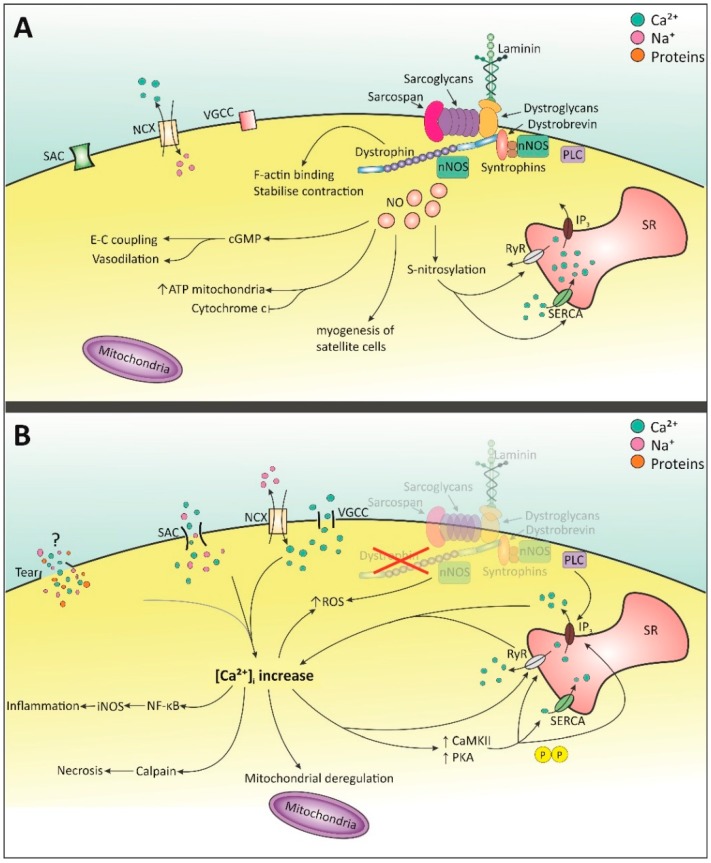Figure 1.
Molecular pathways involving Ca2+ and NO signaling in healthy and dystrophic cell. (A) Dystrophin present: Ca2+ is balanced by SACs, NCX and VGCC. nNOS is activated by Ca2+-dependent calmodulin [40,41,42]. NO is produced which is involved in many processes including normal E-C coupling, and S-nitrosylation of SERCA and RyR [25,40,42,43]. Upon E-C coupling, [Ca2+]i rises via opening of RyR and IP3 receptor. When the stimulus stops, intracellular Ca2+ returns to normal via SERCA and other cell membrane Ca2+-permeable channels. (B) Dystrophin absent: membrane tears, SACs, NCX and VGCC increase intracellular Ca2+ [28,35,36,38,44,45]. Elevated Ca2+ increases CaMKII and PKA which hyper-phosphorylate Ca2+ channels on the SR [31,32,33]. SERCA levels may decrease and RyR becomes sensitive to Ca2+ [31,32,46,47,48]. Mis-localization of nNOS disrupts NO signaling and function [49,50]. This combined with raised Ca2+ increases ROS production [28,51]. Increased [Ca2+]i elicits multiple detrimental events [24,30]. SACs: stretched-activated channels; NCX: Na+-Ca2+ exchanger; VGCC: Voltage-gated Ca2+ channels; nNOS: neuronal nitric oxide synthase; SERCA: Sarcoplasmic/endoplasmic reticulum Ca2+-ATPase; RyR: ryanodine receptor; NO: nitric oxide; IP3: inositol 1,4,5-triphosphate; SR: sarcoplasmic reticulum; CaMKII: calmodulin-kinase II; PKA: protein kinase A.

